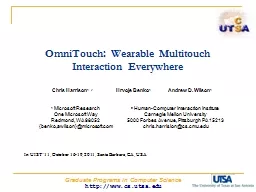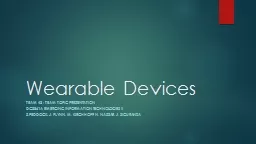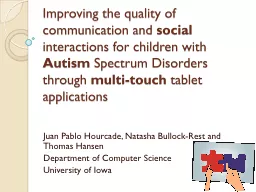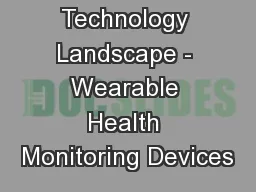PPT-OmniTouch: Wearable Multitouch Interaction Everywhere
Author : mitsue-stanley | Published Date : 2016-07-23
Chris Harrison 1 2 In UIST11 October 1619 2011 Santa Barbara CA USA 1 Microsoft Research One Microsoft Way Redmond WA 98052 benkoawilsonmicrosoftcom Andrew D Wilson
Presentation Embed Code
Download Presentation
Download Presentation The PPT/PDF document "OmniTouch: Wearable Multitouch Interacti..." is the property of its rightful owner. Permission is granted to download and print the materials on this website for personal, non-commercial use only, and to display it on your personal computer provided you do not modify the materials and that you retain all copyright notices contained in the materials. By downloading content from our website, you accept the terms of this agreement.
OmniTouch: Wearable Multitouch Interaction Everywhere: Transcript
Download Rules Of Document
"OmniTouch: Wearable Multitouch Interaction Everywhere"The content belongs to its owner. You may download and print it for personal use, without modification, and keep all copyright notices. By downloading, you agree to these terms.
Related Documents














![[BOOK]-Status: Why Is It Everywhere? Why Does It Matter?: Why Is It Everywhere? Why Does](https://thumbs.docslides.com/956296/book-status-why-is-it-everywhere-why-does-it-matter-why-is-it-everywhere-why-does-it-matter.jpg)